Abstract
1. A study has been made of the hyperpolarization that follows a period of electrical activity (post-tetanic hyperpolarization) and of the hyperpolarization which develops when potassium is readmitted after bathing the desheathed vagus nerve of the rabbit in potassium-free Locke solution during 15 min (potassium-activated response).
2. Reduction of the external chloride concentration increases the membrane resistance and the potassium-activated response without changing the time constant of the response. A linear relation between the amplitude of the potassium-activated response and the membrane resistance was found. When chloride was replaced completely by isethionate (sodium salt) and by sulphate (other salts) the potassium-activated response increased by a factor of 5.
3. The membrane resistance is decreased during the post-tetanic hyper-polarization elicited in isethionate Locke solution: the decrease is more pronounced after a longer period of electrical stimulation of the nerve.
4. A small increase of the membrane resistance was found during the potassium-activated response. The changed membrane potential during the response can account for the alteration of the membrane resistance observed.
5. The amplitude of the potassium-activated response is increased during hyperpolarization and reduced during external depolarization of the nerve, whereas the time constant is not affected. The potassium-activated response appears to be independent of polarization of the membrane after correction for the changed membrane resistance.
6. The maximum amplitude of the activated response and the external potassium concentration are related following Michaelis—Menten kinetics; the time constant of the response is inversely related to the external potassium concentration.
7. The area of the electrogenic response activated by high potassium concentrations (5·6-20 mM) is almost constant, but is reduced at lower potassium concentrations. The amplitude and area of the thallium-activated response are increased (about 1·5 times) compared with the potassium-activated response.
8. It was concluded that the electrogenic response, reflected by post-tetanic hyperpolarization, is not directly related to activity of the electrogenic pump, which is probably due to accumulation of potassium in the periaxonal space; that the potassium activated response is produced entirely by activity of the electrogenic sodium pump; and that the current produced by activity of the electrogenic sodium pump is independent of the electrochemical gradient and membrane resistance.
Full text
PDF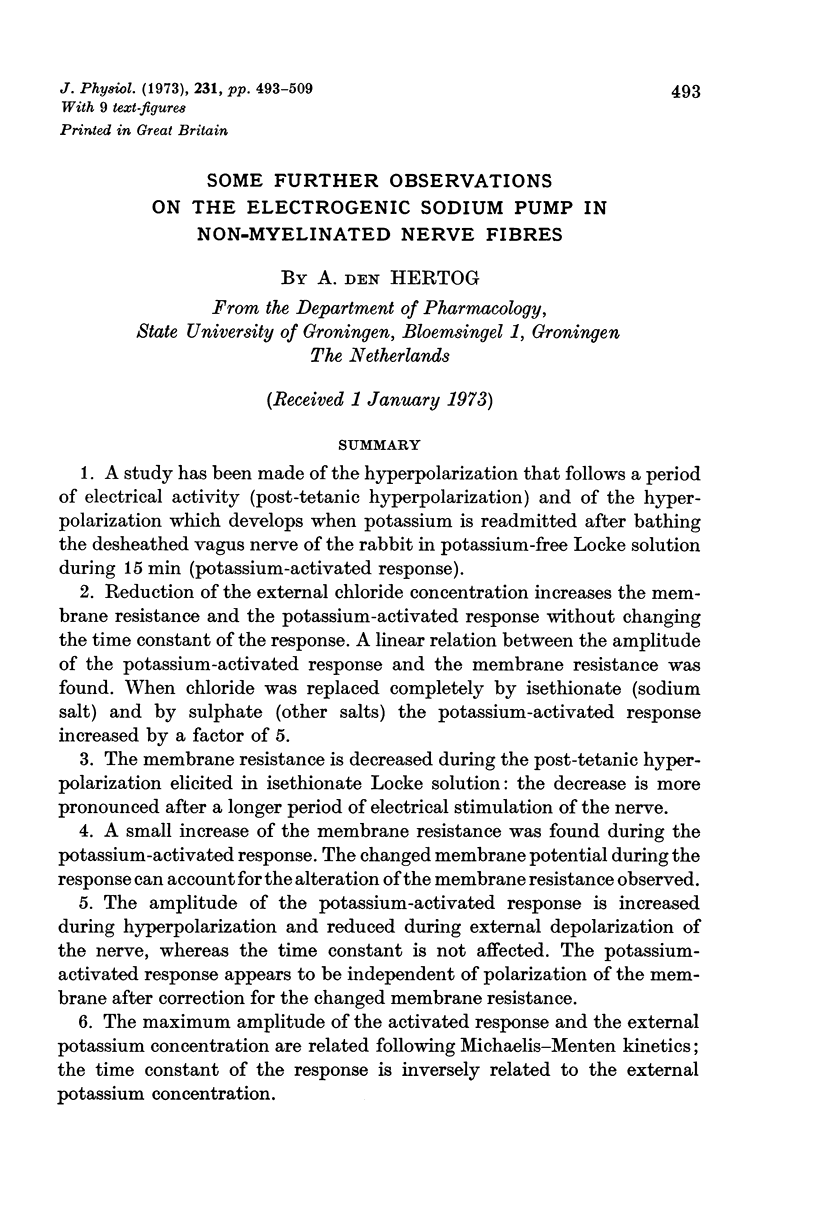
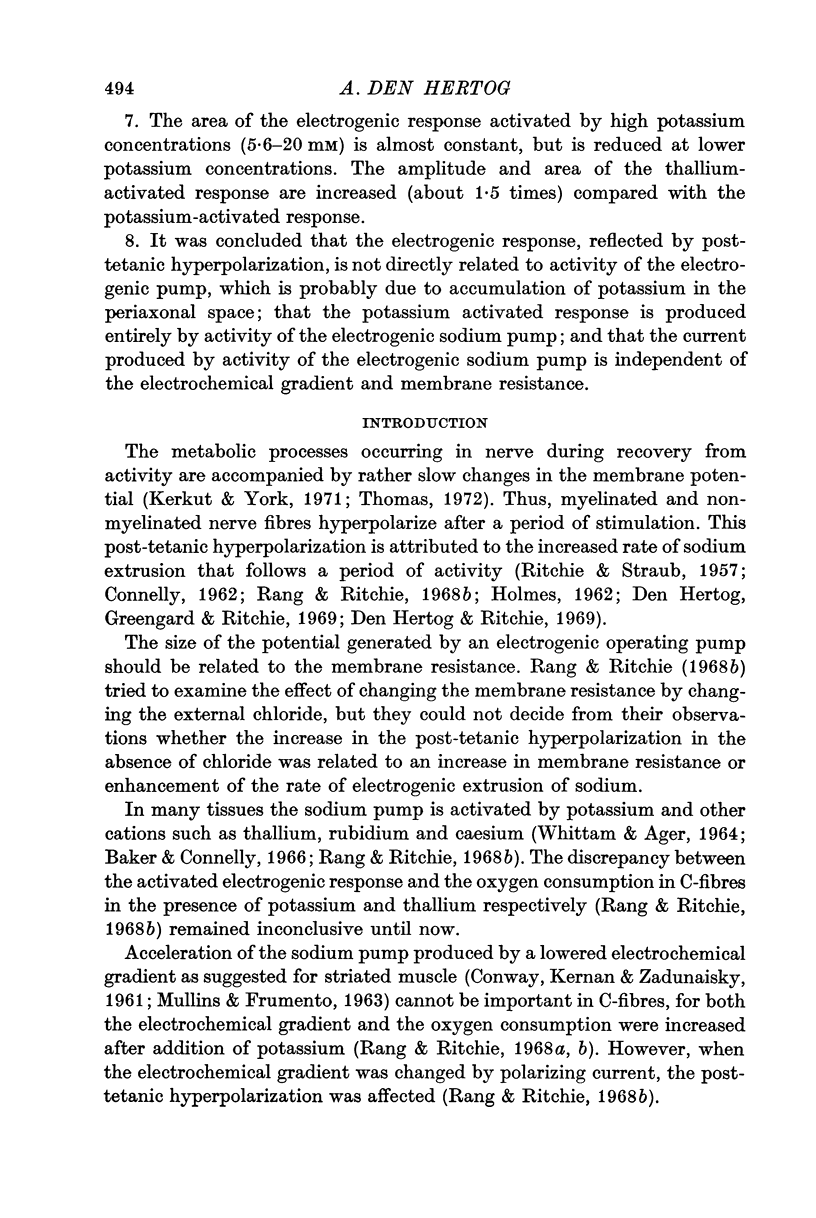
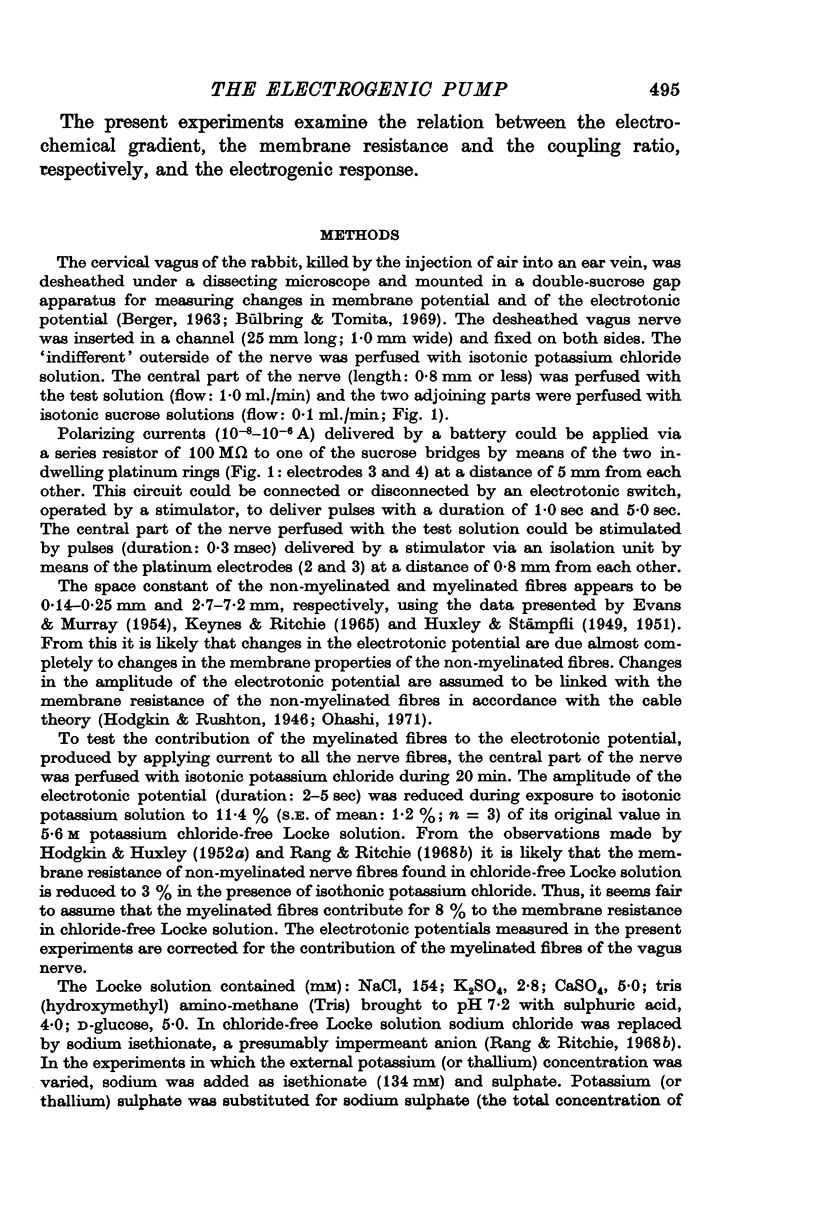
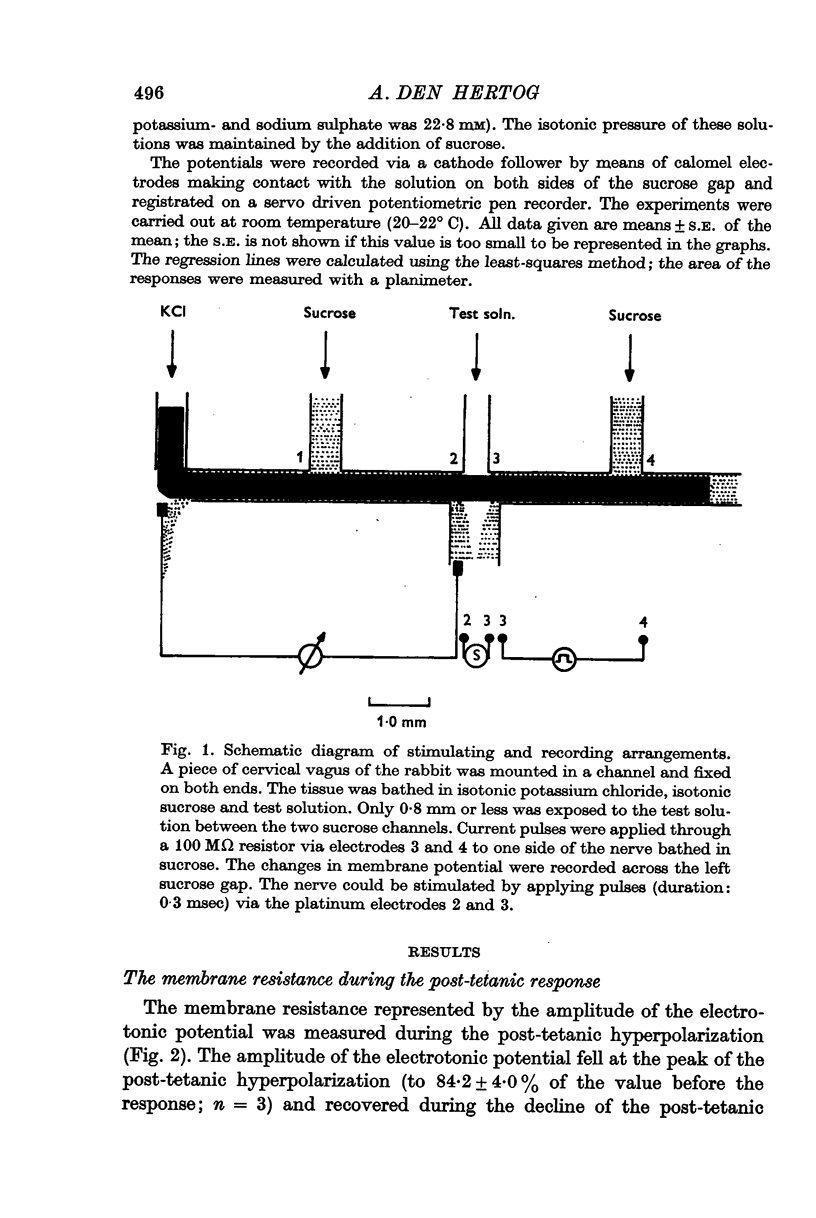
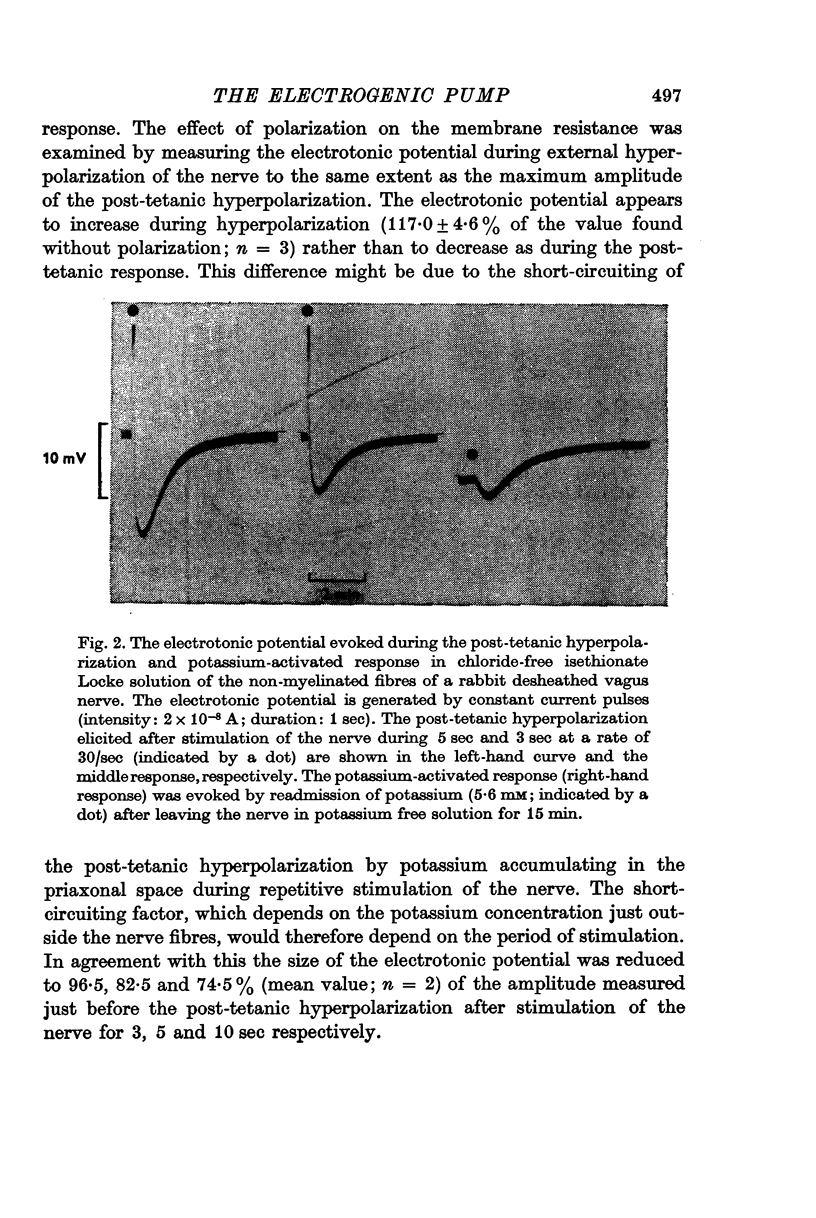
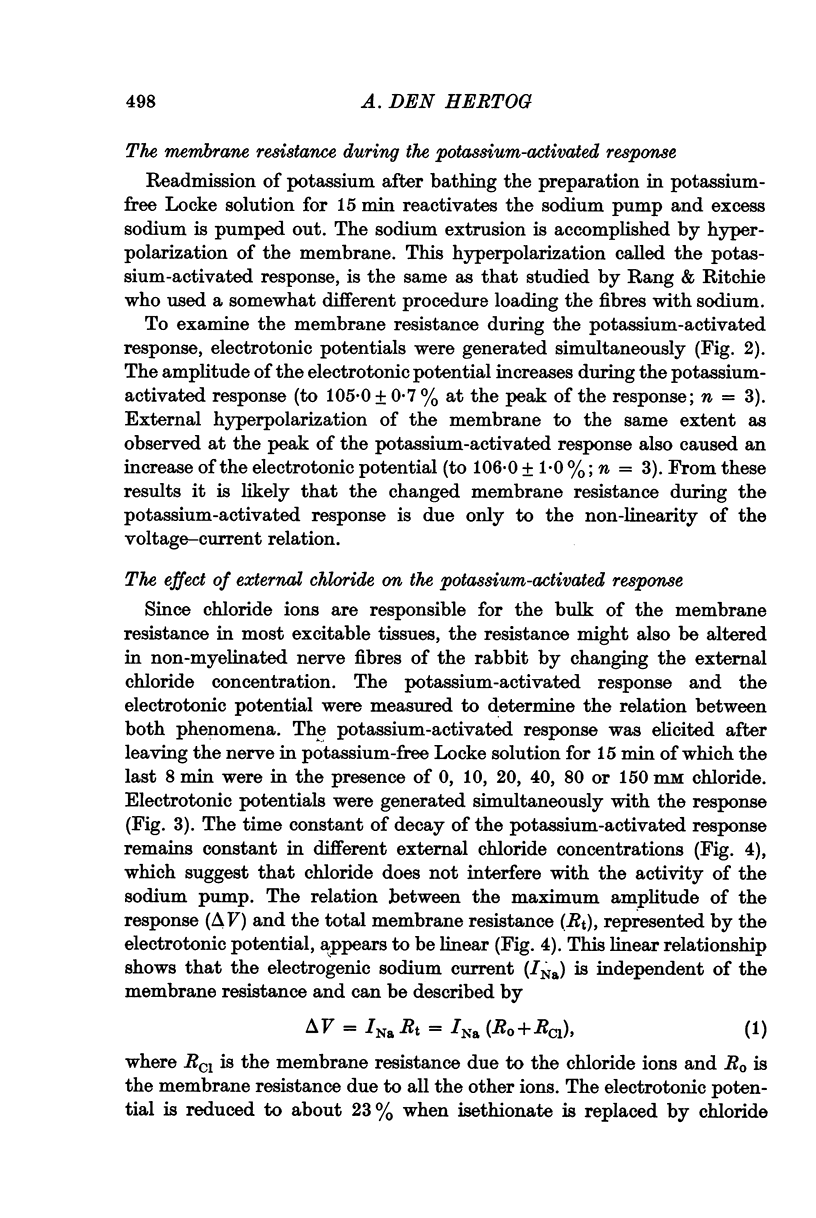

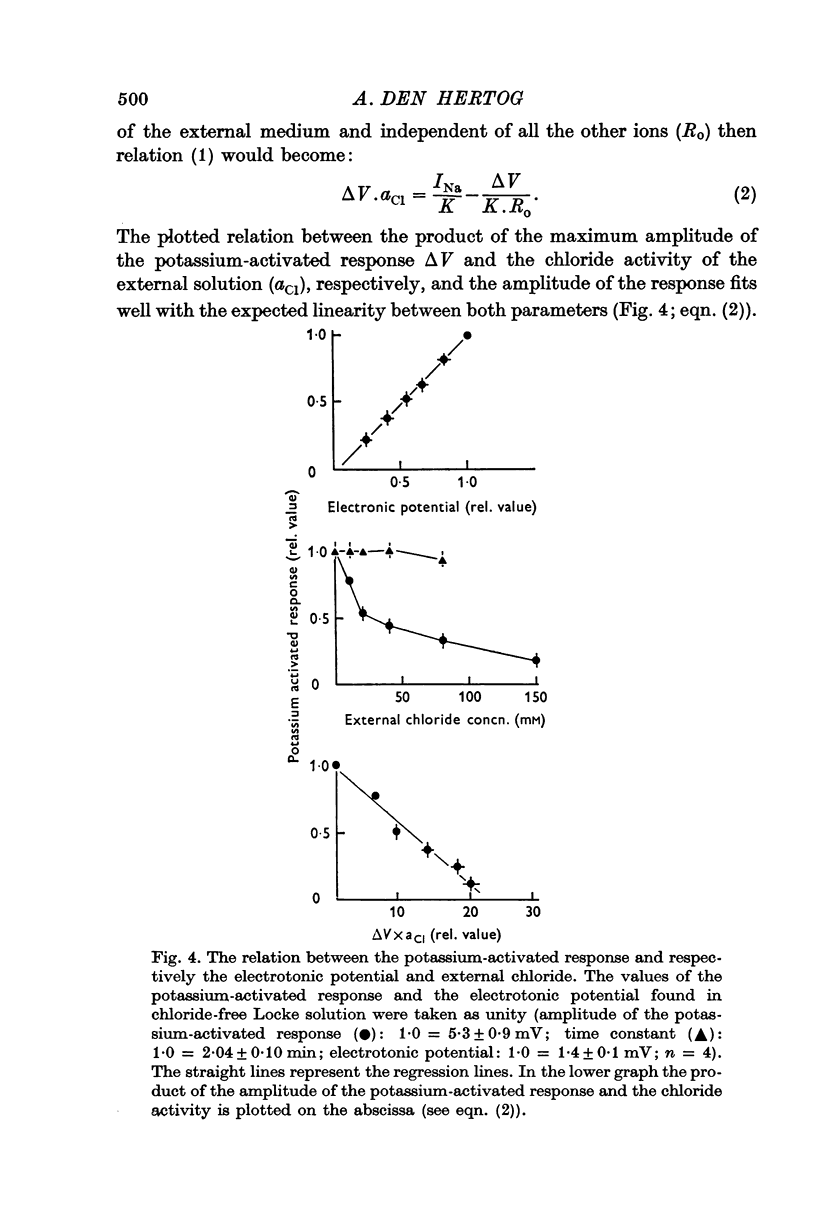
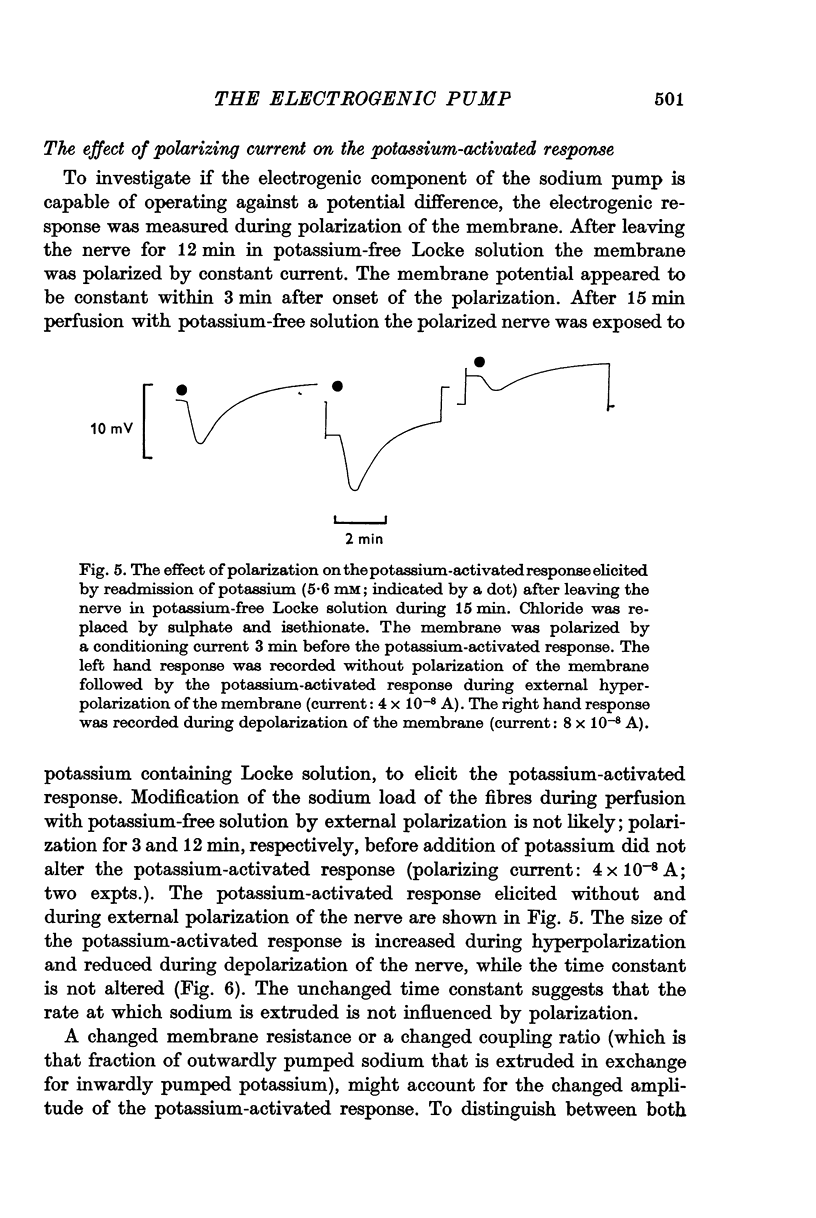
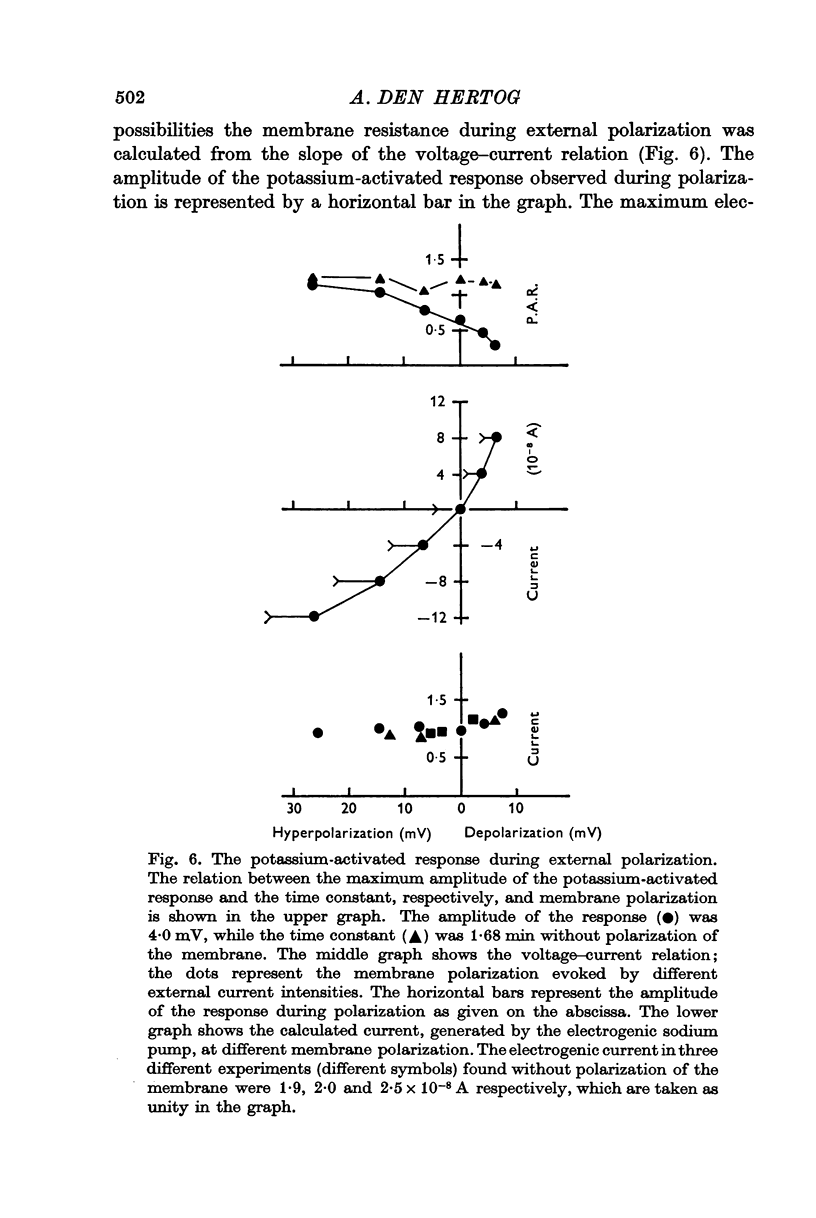
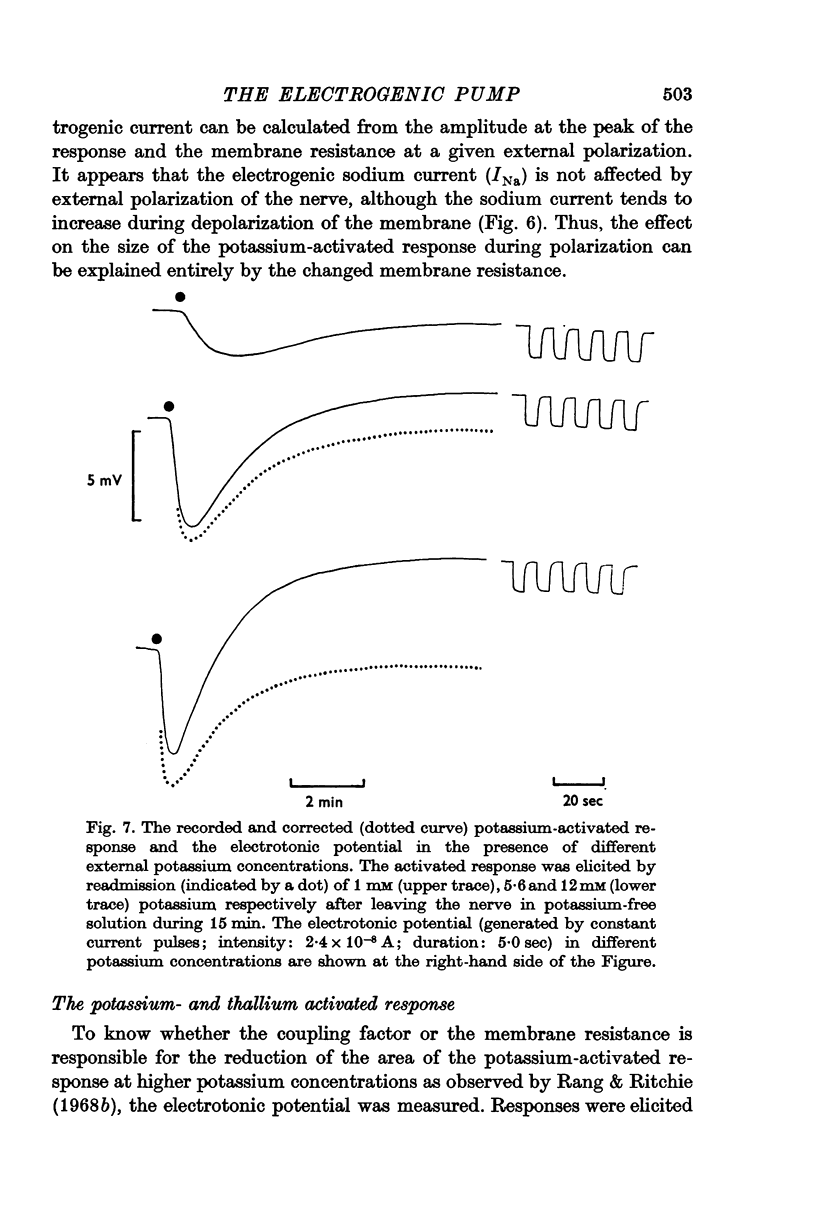
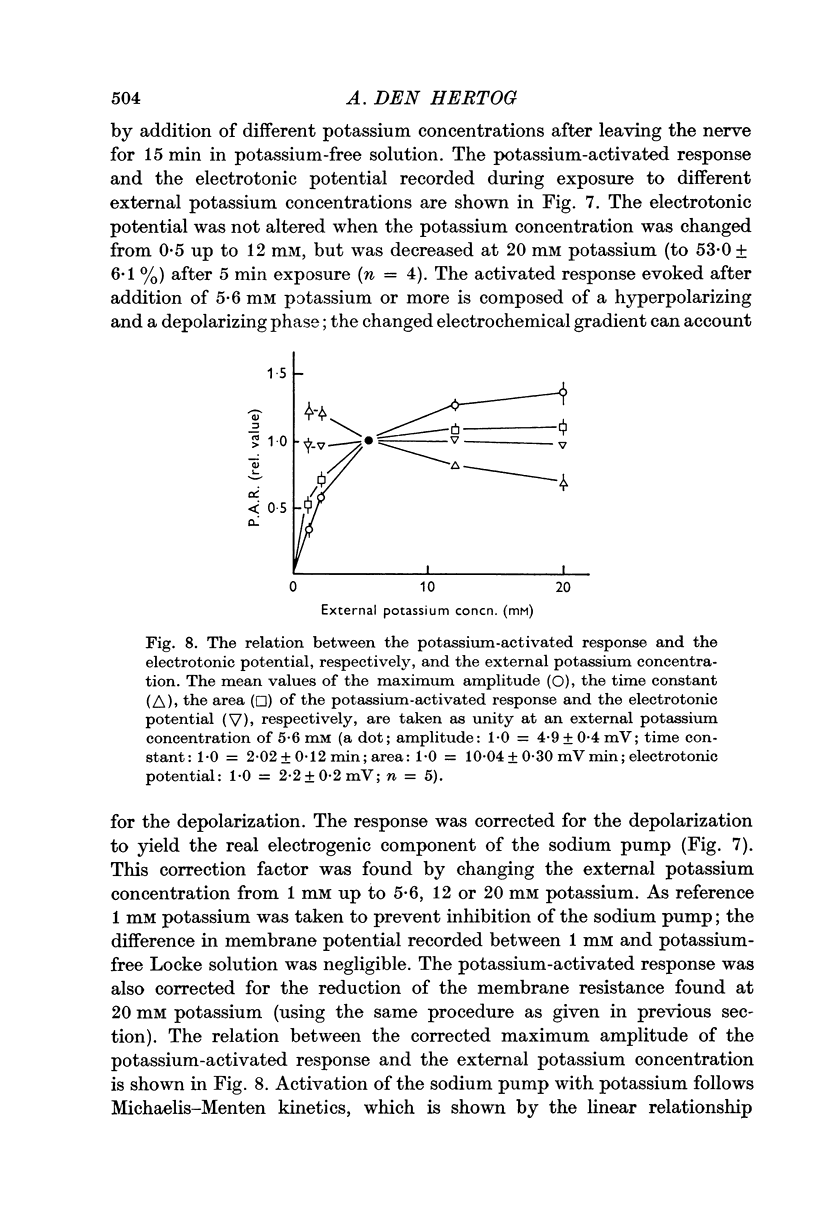
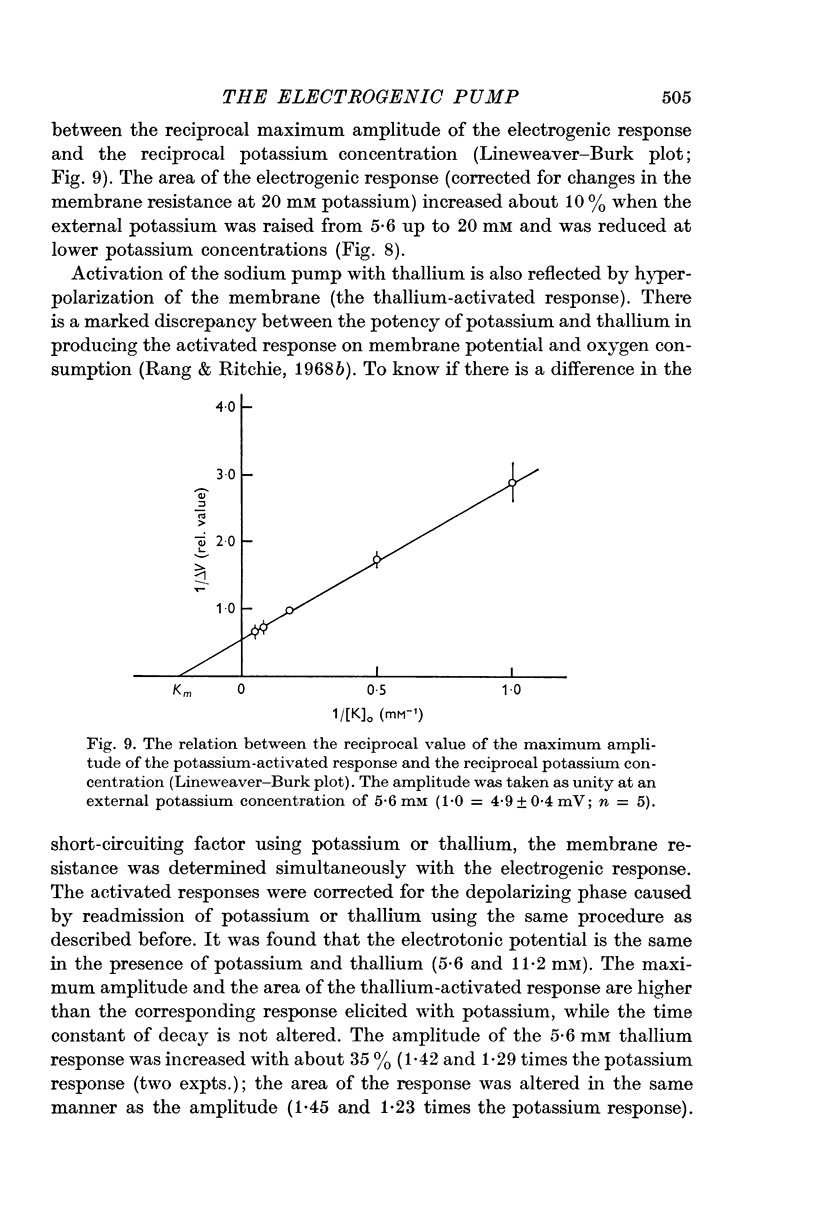
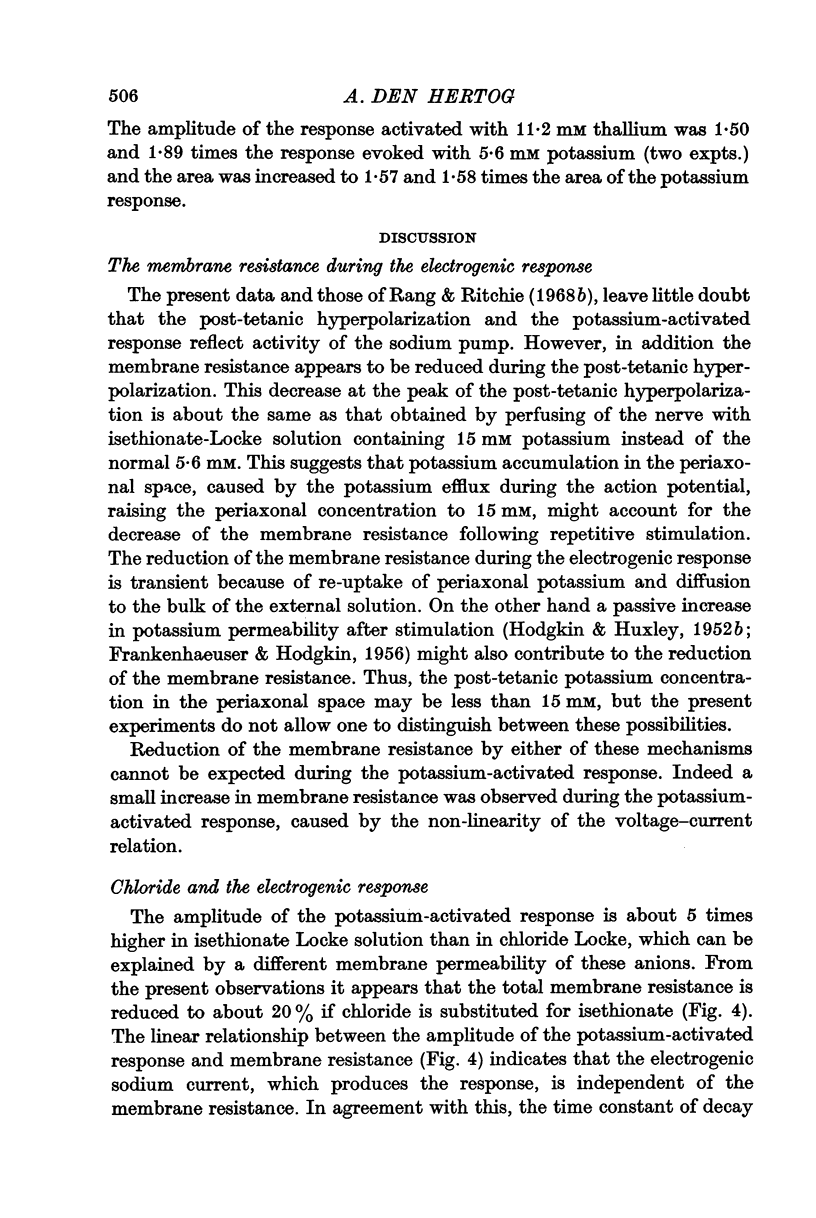
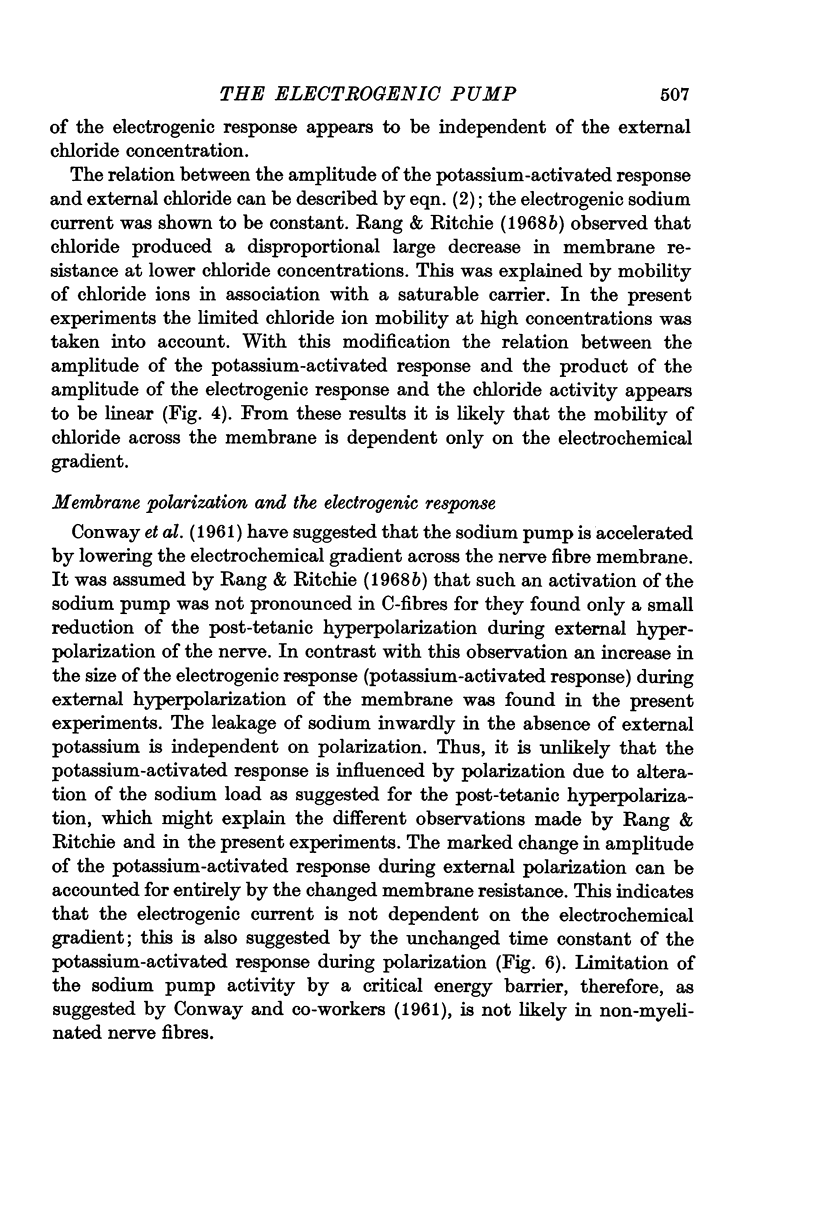
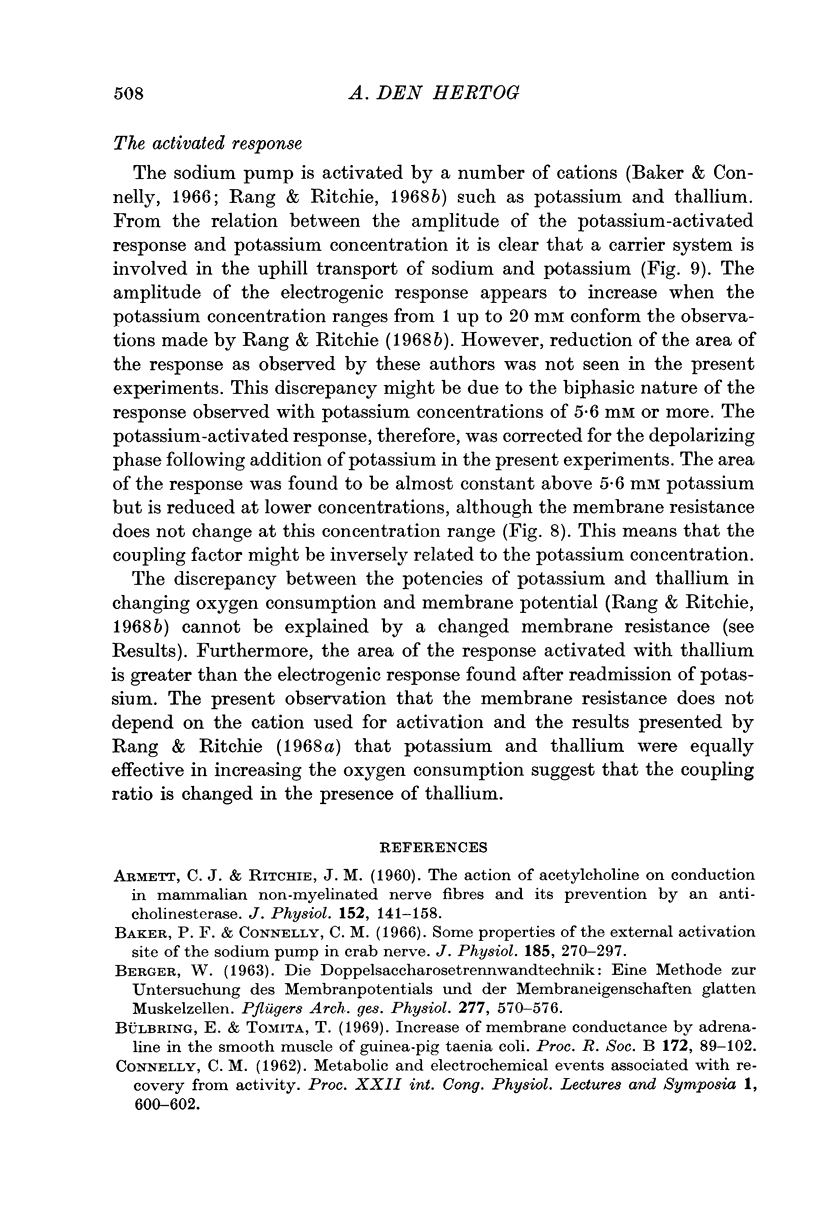
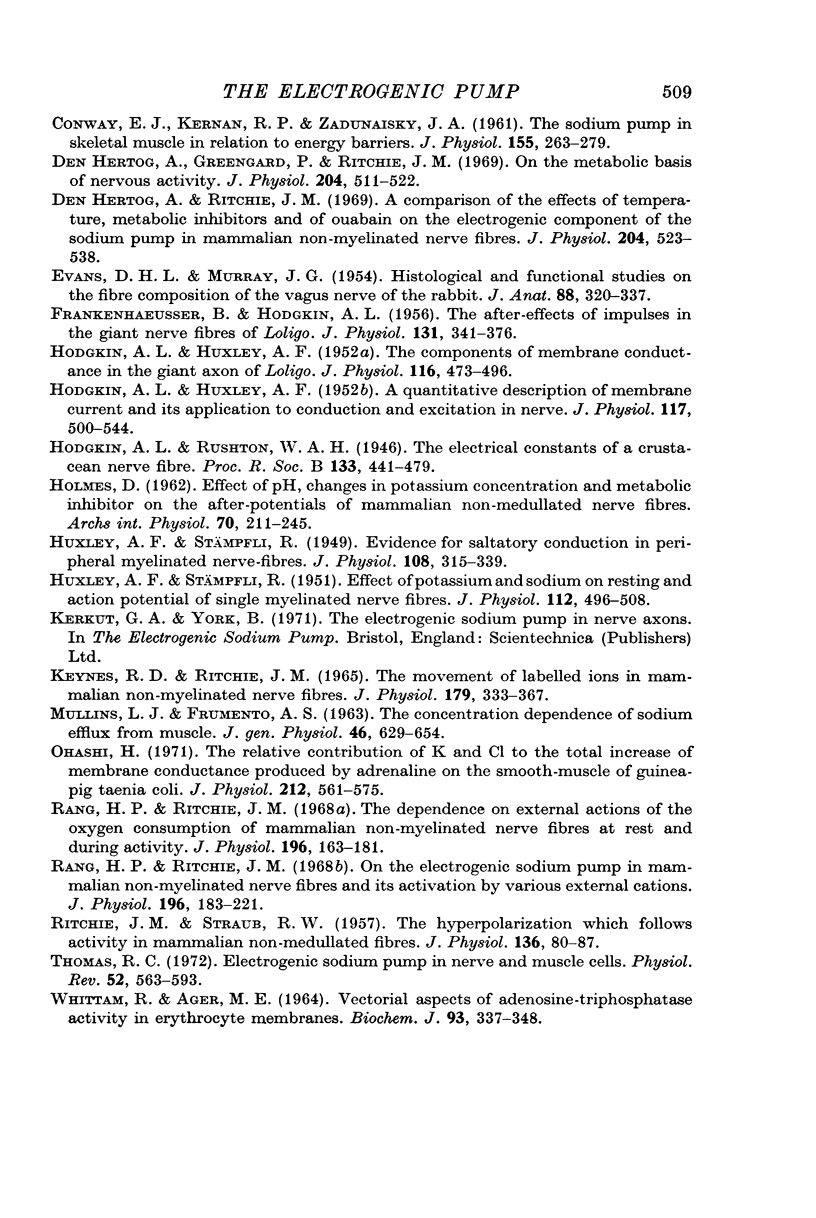
Images in this article
Selected References
These references are in PubMed. This may not be the complete list of references from this article.
- ARMETT C. J., RITCHIE J. M. The action of acetylcholine on conduction in mammalian non-myelinated fibres and its prevention by an anticholinesterase. J Physiol. 1960 Jun;152:141–158. doi: 10.1113/jphysiol.1960.sp006476. [DOI] [PMC free article] [PubMed] [Google Scholar]
- BERGER W. DIE DOPPELSACCHAROSETRENNWANDTECHNIK: EINE METHODE ZUR UNTERSUCHUNG DES MEMBRANPOTENTIALS UND DER MEMBRANEIGENSCHAFTEN GLATTER MUSKELZELLEN. Pflugers Arch Gesamte Physiol Menschen Tiere. 1963 Sep 9;277:570–576. [PubMed] [Google Scholar]
- Baker P. F., Connelly C. M. Some properties of the external activation site of the sodium pump in crab nerve. J Physiol. 1966 Jul;185(2):270–297. doi: 10.1113/jphysiol.1966.sp007987. [DOI] [PMC free article] [PubMed] [Google Scholar]
- Bülbring E., Tomita T. Increase of membrane conductance by adrenaline in the smooth muscle of guinea-pig taenia coli. Proc R Soc Lond B Biol Sci. 1969 Mar 11;172(1027):89–102. doi: 10.1098/rspb.1969.0013. [DOI] [PubMed] [Google Scholar]
- CONWAY E. J., KERNAN R. P., ZADUNAISKY J. A. The sodium pump in skeletal muscle in relation to energy barriers. J Physiol. 1961 Feb;155:263–279. doi: 10.1113/jphysiol.1961.sp006626. [DOI] [PMC free article] [PubMed] [Google Scholar]
- EVANS D. H., MURRAY J. G. Histological and functional studies on the fibre composition of the vagus nerve of the rabbit. J Anat. 1954 Jul;88(3):320–337. [PMC free article] [PubMed] [Google Scholar]
- FRANKENHAEUSER B., HODGKIN A. L. The after-effects of impulses in the giant nerve fibres of Loligo. J Physiol. 1956 Feb 28;131(2):341–376. doi: 10.1113/jphysiol.1956.sp005467. [DOI] [PMC free article] [PubMed] [Google Scholar]
- HODGKIN A. L., HUXLEY A. F. A quantitative description of membrane current and its application to conduction and excitation in nerve. J Physiol. 1952 Aug;117(4):500–544. doi: 10.1113/jphysiol.1952.sp004764. [DOI] [PMC free article] [PubMed] [Google Scholar]
- HODGKIN A. L., HUXLEY A. F. The components of membrane conductance in the giant axon of Loligo. J Physiol. 1952 Apr;116(4):473–496. doi: 10.1113/jphysiol.1952.sp004718. [DOI] [PMC free article] [PubMed] [Google Scholar]
- HOLMES O. Effects of pH, changes in potassium concentration and metabolic inhibitors on the after-potentials of mammalian non-medullated nerve fibres. Arch Int Physiol Biochim. 1962 Mar;70:211–245. doi: 10.3109/13813456209092855. [DOI] [PubMed] [Google Scholar]
- HUXLEY A. F., STAMPFLI R. Effect of potassium and sodium on resting and action potentials of single myelinated nerve fibers. J Physiol. 1951 Feb;112(3-4):496–508. doi: 10.1113/jphysiol.1951.sp004546. [DOI] [PMC free article] [PubMed] [Google Scholar]
- Huxley A. F., Stämpfli R. Evidence for saltatory conduction in peripheral myelinated nerve fibres. J Physiol. 1949 May 15;108(3):315–339. [PMC free article] [PubMed] [Google Scholar]
- Keynes R. D., Ritchie J. M. The movements of labelled ions in mammalian non-myelinated nerve fibres. J Physiol. 1965 Jul;179(2):333–367. doi: 10.1113/jphysiol.1965.sp007666. [DOI] [PMC free article] [PubMed] [Google Scholar]
- MULLINS L. J., FRUMENTO A. S. The concentration dependence of sodium efflux from muscle. J Gen Physiol. 1963 Mar;46:629–654. doi: 10.1085/jgp.46.4.629. [DOI] [PMC free article] [PubMed] [Google Scholar]
- Ohashi H. The relative contribution of K and Cl to the total increase of membrane conductance produced by adrenaline on the smooth muscle of guinea-pig Taenia coli. J Physiol. 1971 Jan;212(2):561–575. doi: 10.1113/jphysiol.1971.sp009342. [DOI] [PMC free article] [PubMed] [Google Scholar]
- RITCHIE J. M., STRAUB R. W. The hyperpolarization which follows activity in mammalian non-medullated fibres. J Physiol. 1957 Apr 3;136(1):80–97. doi: 10.1113/jphysiol.1957.sp005744. [DOI] [PMC free article] [PubMed] [Google Scholar]
- Rang H. P., Ritchie J. M. On the electrogenic sodium pump in mammalian non-myelinated nerve fibres and its activation by various external cations. J Physiol. 1968 May;196(1):183–221. doi: 10.1113/jphysiol.1968.sp008502. [DOI] [PMC free article] [PubMed] [Google Scholar]
- Rang H. P., Ritchie J. M. The dependence on external cations of the oxygen consumption of mammalian non-myelinated fibres at rest and during activity. J Physiol. 1968 May;196(1):163–181. doi: 10.1113/jphysiol.1968.sp008501. [DOI] [PMC free article] [PubMed] [Google Scholar]
- Whittam R., Ager M. E. Vectorial aspects of adenosine-triphosphatase activity in erythrocyte membranes. Biochem J. 1964 Nov;93(2):337–348. doi: 10.1042/bj0930337. [DOI] [PMC free article] [PubMed] [Google Scholar]
- den Hertog A., Greengard P., Ritchie J. M. On the metabolic basis of nervous activity. J Physiol. 1969 Oct;204(3):511–521. doi: 10.1113/jphysiol.1969.sp008928. [DOI] [PMC free article] [PubMed] [Google Scholar]
- den Hertog A., Ritchie J. M. A comparison of the effect of temperature, metabolic inhibitors and of ouabain on the electrogenic componen of the sodium pump in mammalian non-myelinated nerve fibres. J Physiol. 1969 Oct;204(3):523–538. doi: 10.1113/jphysiol.1969.sp008929. [DOI] [PMC free article] [PubMed] [Google Scholar]




